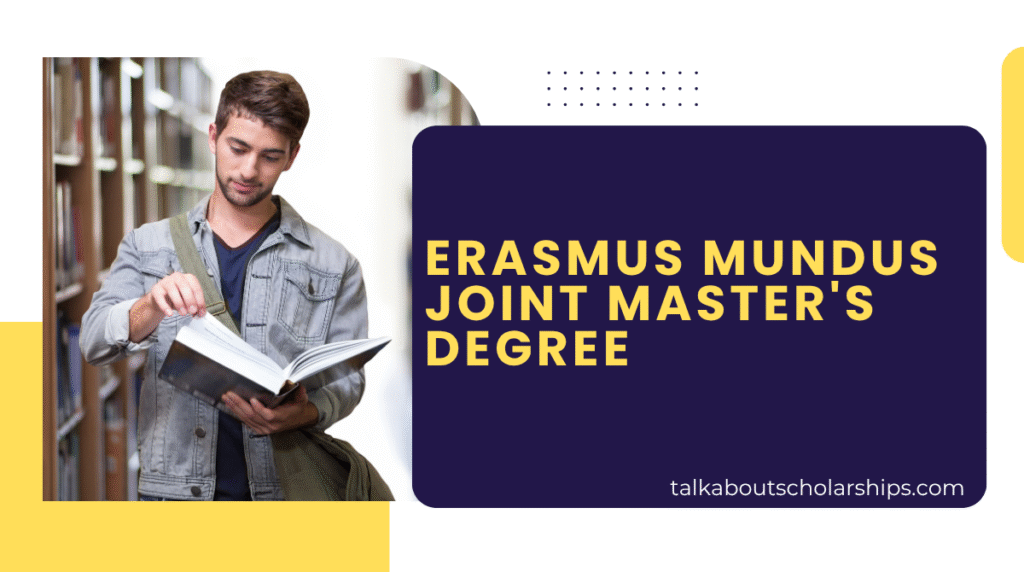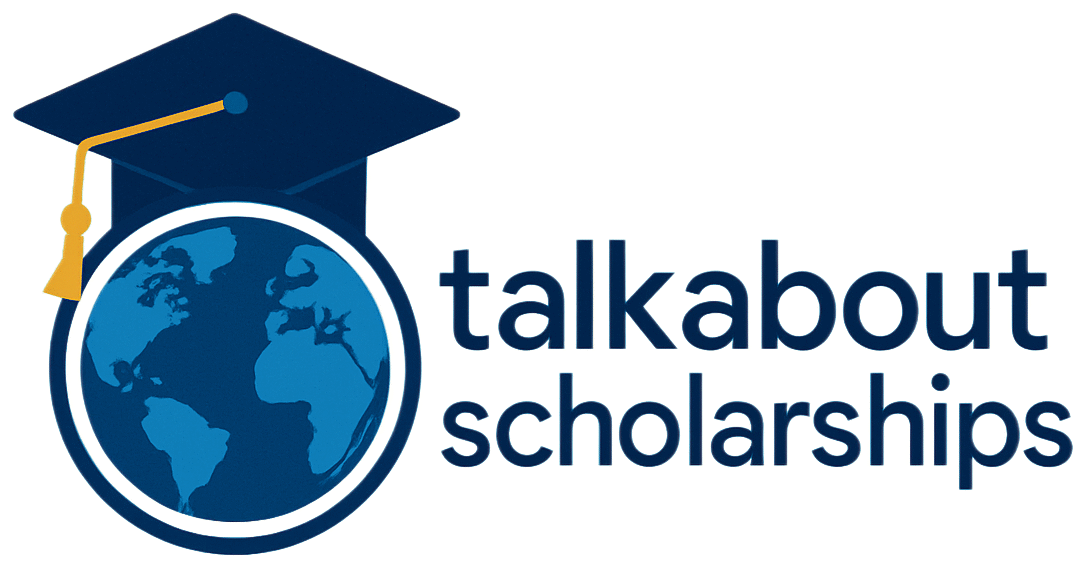Imagine earning a master’s degree while studying in multiple European countries, learning from world-class professors, and receiving a generous scholarship—all under one prestigious program. Sounds like a dream? That’s exactly what the Erasmus Mundus Joint Masters Degree (EMJMD) offers.
If you are looking for a life-changing study abroad experience, this program could be the your perfect match. But what exactly is the Erasmus Mundus Joint Masters Degree, and why should you consider it? Let’s dive deep into this unique opportunity, exploring its benefits, structure, and how it can shape your academic and professional future.

What is the Erasmus Mundus Joint Masters Degree?
The Erasmus Mundus Joint Masters Degree (EMJMD) is a reputable, fully funded (or partially funded) international graduate program supported by the European Union (EU). It brings together top universities across Europe (and sometimes beyond) to offer joint or multiple degrees in various specialized fields.
Key Features of the Erasmus Mundus Joint Masters Degree (EMJMD) Program:
✅ Study in Multiple Countries – Spend each semester in a different European university.
✅ Scholarships Available – Full or partial funding covering tuition, travel, and even living costs.
✅ Internationally Recognized Degree – Earn a joint, double, or multiple degree from leading institutions.
✅ Diverse & Elite Network – Connect with students and professors from around the world.
✅ Career-Boosting Opportunities – Strong industry links, internships, and research prospects.
The program was launched in 2004 and has since helped thousands of students gain globally competitive education without the financial load.
Why Choose an Erasmus Mundus Joint Masters Degree for Studying Abroad?
1. Unmatched International Exposure
Unlike traditional master’s programs, EMJMD requires students to study in at least two different countries. For example, you might start in Spain, further move to Germany, and finish with an internship in Sweden. This multicultural immersion enhances adaptability, language skills, and global networking.
2. Full or Partial Scholarships
One of the biggest draws is the Erasmus Mundus scholarship, which covers the following:
- Tuition fees (fully or partially)
- Monthly stipend (around €1,000–€1,400)
- Travel and installation costs
This makes it one of the most affordable ways to study abroad at a top-tier institution.
3. High Academic Quality & Interdisciplinary Learning
EMJMD programs are rigorously selected by the European Union (EU), ensuring only the best universities participate. Courses are interdisciplinary, blending theory with practical research, industry collaborations, and fieldwork.
4. Strong Career Prospects
Graduates from EMJMD programs are highly sought after by employers due to their:
- Multinational academic background
- Cross-cultural communication skills
- Research and industry experience
Many alumni secure roles in international organizations (UN, WHO, EU), top corporations, and academia.
5. A Thriving Global Network
You’ll join a community of high-achieving students from over 100 countries. This network becomes invaluable for future collaborations, job referrals, and lifelong friendships.
How Does the Erasmus Mundus Joint Masters Program Work?
Program Structure
Most EMJMD programs last 2 years (120 ECTS credits) and follow the below-mentioned structure:
| Year | Location | Focus |
|---|---|---|
| Year 1 | University A (e.g., France) | Core coursework |
| Year 1.5 | University B (e.g., Italy) | Specialized modules |
| Year 2 | University C (e.g., Netherlands) | Thesis/Internship |
Some programs also include summer schools, fieldwork, or industry placements.
Degrees Awarded
Depending on the program, you may receive:
- A joint degree (one diploma signed by all partner universities)
- A double or multiple degree (separate diplomas from each institution)
Top Erasmus Mundus Joint Masters Programs in 2025-26
Here are some of the most competitive and well-regarded EMJMD programs:
1. Engineering & Technology
- MSc SERP+ (Surface, Electro, Radiation, and Photo-Chemistry)
- Universities: France, Poland, Portugal, Italy
- Focus: Chemistry, Material Science
- Website: SERP+
- MSc EMINE (European Master in Nuclear Energy)
- Universities: France (Grenoble INP), Spain (UPC), Sweden (KTH)
- Focus: Nuclear Engineering
- Website: EMINE
- MSc SELECT+ (Environmental Pathways for Sustainable Energy Systems)
- Universities: Sweden (KTH), Italy (Politecnico di Torino), Portugal (IST)
- Focus: Sustainable Energy
- Website: SELECT+
2. Computer Science & AI
- MSc EIT Digital (Data Science, AI, Cybersecurity, etc.)
- Universities: Multiple (Sweden, Finland, Germany, France, etc.)
- Focus: AI, Cloud Computing, Cybersecurity
- Website: EIT Digital
- MSc HCID (Human-Computer Interaction & Design)
- Universities: Sweden (KTH), Germany (LMU), Finland (Aalto), Spain (UPM)
- Focus: UX Design, HCI
- Website: HCID
3. Environmental & Sustainability Studies
- MSc MEEES (Earthquakes & Impact Assessment)
- Universities: France (Univ. Grenoble Alpes), Italy (Univ. Pavia), Greece (Univ. Patras)
- Focus: Seismology, Environmental Risks
- Website: MEEES
- MSc EMerald (Georesources Engineering)
- Universities: France (UL), Germany (TU Freiberg), Sweden (LTU), Belgium (ULiège)
- Focus: Sustainable Mining, Circular Economy
- Website: EMerald
4. Economics & Business
- MSc QEM (Models & Methods of Quantitative Economics)
- Universities: France (Paris 1), Germany (Bielefeld), Italy (Venice), Spain (Barcelona)
- Focus: Econometrics, Mathematical Economics
- Website: QEM
- MSc GLODEP (Global Development Policy)
- Universities: Czech Republic (Palacký), France (Clermont), Italy (Pavia)
- Focus: Development Economics
- Website: GLODEP
5. Life Sciences & Health
- MSc IMIM (International Master in Innovative Medicine)
- Universities: Sweden (Karolinska), Netherlands (Groningen), Spain (UPF)
- Focus: Biomedical Research, Drug Development
- Website: IMIM
- MSc LIVE (Livestock Science & Production)
- Universities: France (AgroParisTech), Germany (Hohenheim), Sweden (SLU)
- Focus: Animal Science, Sustainable Agriculture
- Website: LIVE
How to Apply for an Erasmus Mundus Scholarship
Eligibility Criteria
- A Bachelor’s degree (or equivalent) in a relevant field
- Strong academic record (varies by program)
- Proof of English proficiency (IELTS/TOEFL) – Some programs may require different languages in order to get qualified for admission.
- Motivation letter & recommendation letters
Application Process
- Choose your program from the official catalogue.
- Prepare documents (CV, transcripts, letters of recommendation, motivation essay).
- Submit before the deadline (typically December–January for the next academic year).
- Interview (if required) – Some programs conduct interviews for scholarship selection.
💡 Pro Tip: Each program has its own criteria—tailor your application accordingly!
Real Student Experiences: Is It Worth It?
“Studying in three countries (Portugal, Belgium, and Sweden) through Erasmus Mundus was the best decision I ever made. The scholarship covered everything, and I now work for an agency of EU!” – Maria, GLOCAL Graduate
“The network I built during my EMJMD helped me land a PhD position at Oxford.” – Ahmed, IMESS Alumnus
Conclusion: Should You Pursue an Erasmus Mundus Joint Masters Degree?
If you want a truly global education, financial support, and a degree that opens doors worldwide, the Erasmus Mundus Joint Masters Degree is an unbeatable choice. It’s more than just a Master’s—it’s a transformative experience that shapes your career and worldview.
Ready to Apply?
📌 Explore programs on the official Erasmus Mundus website.
📌 Start early—scholarships are highly competitive!

